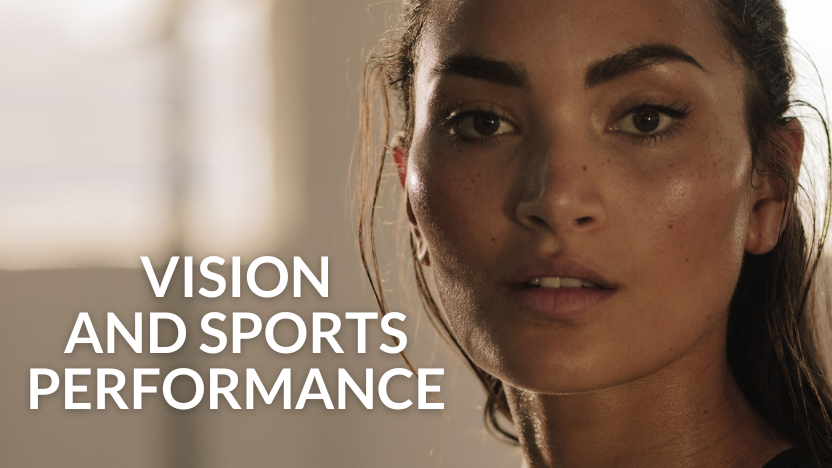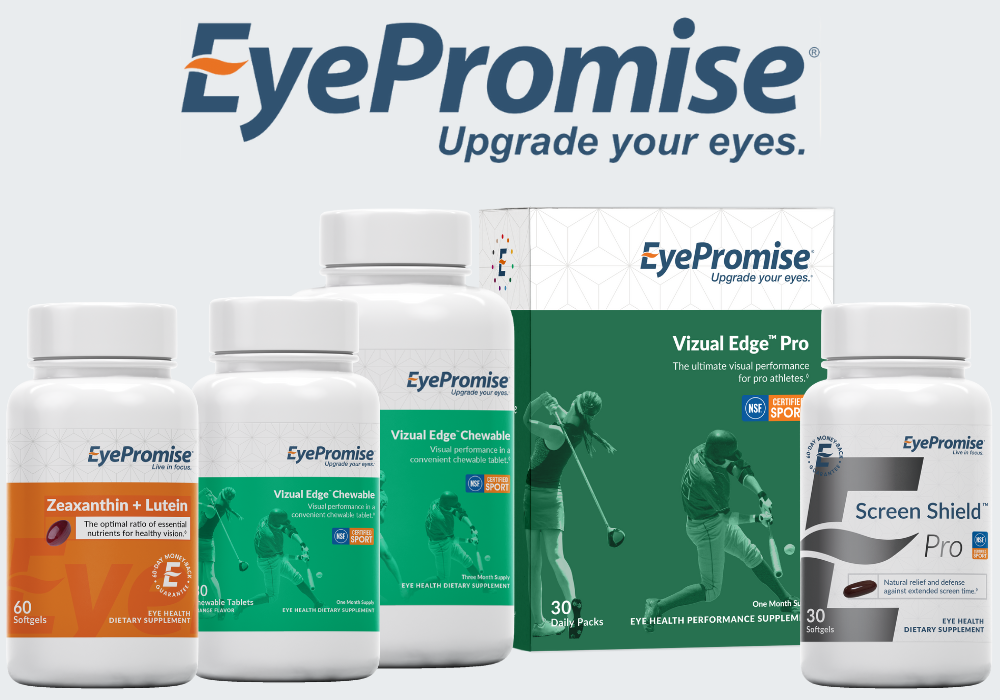Vision and Sports Performance
Posted by EyePromise on Dec 13th 2023
Vision is especially important for sports. Having not only healthy vision, but optimal vision is critical to performance. There are many components of visual function, each impacting on-field performance in different ways.
Visual Processing and Reaction Time
Believe it or not, your eyes can impact reaction time. The eyes are closely connected to the brain, and it's their responsibility to relay visual information. The more detail they can pick up and the faster they can send that information to the brain for it to process, the faster and better you can react to it. Improving visual performance measurements can lead to increased reaction time.
Contrast Sensitivity

Contrast is critical for seeing the subtle details. Contrast sensitivity is the ability of your eyes to pick up on minute differences in color, textures, objects, etc. Contrast helps golfers read the greens, baseball players pick up the seams of the baseball, and hockey players find the puck in a crowded play.
Acuity and Sharpness
This is typically what people think of when they think about vision and, well, just about anything – including athletics. Acuity is the standard vision assessment completed with sports physicals that involves an eye chart. This measures the ability of your eyes to see objects at different distances compared to “average” (20/20 vision). However, just because you have good acuity does not mean your eyes are functioning at their very best, which is what athletes need.
Glare Recovery

Some sports have additional light sources that contribute to glare, including jumbotrons, stadium lights, camera flashes, and spotlights. When the eyes are exposed to bright light, it can cause temporary blindness, taking several seconds to return to “normal.” This visual function is called glare recovery, and the average is about 5-10 seconds. Athletes with better glare recovery (3-4 seconds) have a better chance of making the play regardless of lighting.
Light Sensitivity
Like glare recovery, light sensitivity can occur with any of the situational lighting that comes with sports. Bright sunlight, stadium lights, etc. can impact an athlete’s ability to see the game/field/court, so much so that it can cause discomfort, leading to squinting, eye strain, and potentially a missed play.
Visual Range
One of the most important visual functions for athletes, visual range, is the ability to use central and peripheral vision to gain a perspective on the full visual field. Without this function, athletes would not be able to see where their teammates are or where the opposing players may be lurking. Also, those Hail Mary passes from the quarterback would certainly be missed without optimal visual range.
Improving Vision for Sports
All these visual performance functions can be improved by increasing macular pigment optical density (MPOD). Macular pigment is a protective layer made up of two crucial dietary antioxidants called zeaxanthin (zee-uh-zan-thin) and lutein (loo-teen). This pigment, when at the optimal density, acts as internal polarized sunglasses, heightening the eyes’ ability to see detail and adjust to lighting.
To increase the density of macular pigment, otherwise known as MPOD, athletes need to ingest at least 10 milligrams of dietary zeaxanthin every day, which is difficult to do through diet alone. That’s why many eye care professionals and sports vision specialists like Graham Erickson, OD, FAAO, FCOVD, recommend supplementing with EyePromise® eye health performance supplements.
Learn more about EyePromise’s visual performance packages.
For athletes looking for an edge, improving MPOD and visual performance can help them Upgrade Their Eyes and give them that little bit extra to beat out the competition. Learn more about visual performance and MPOD from Dr. Erickson.


